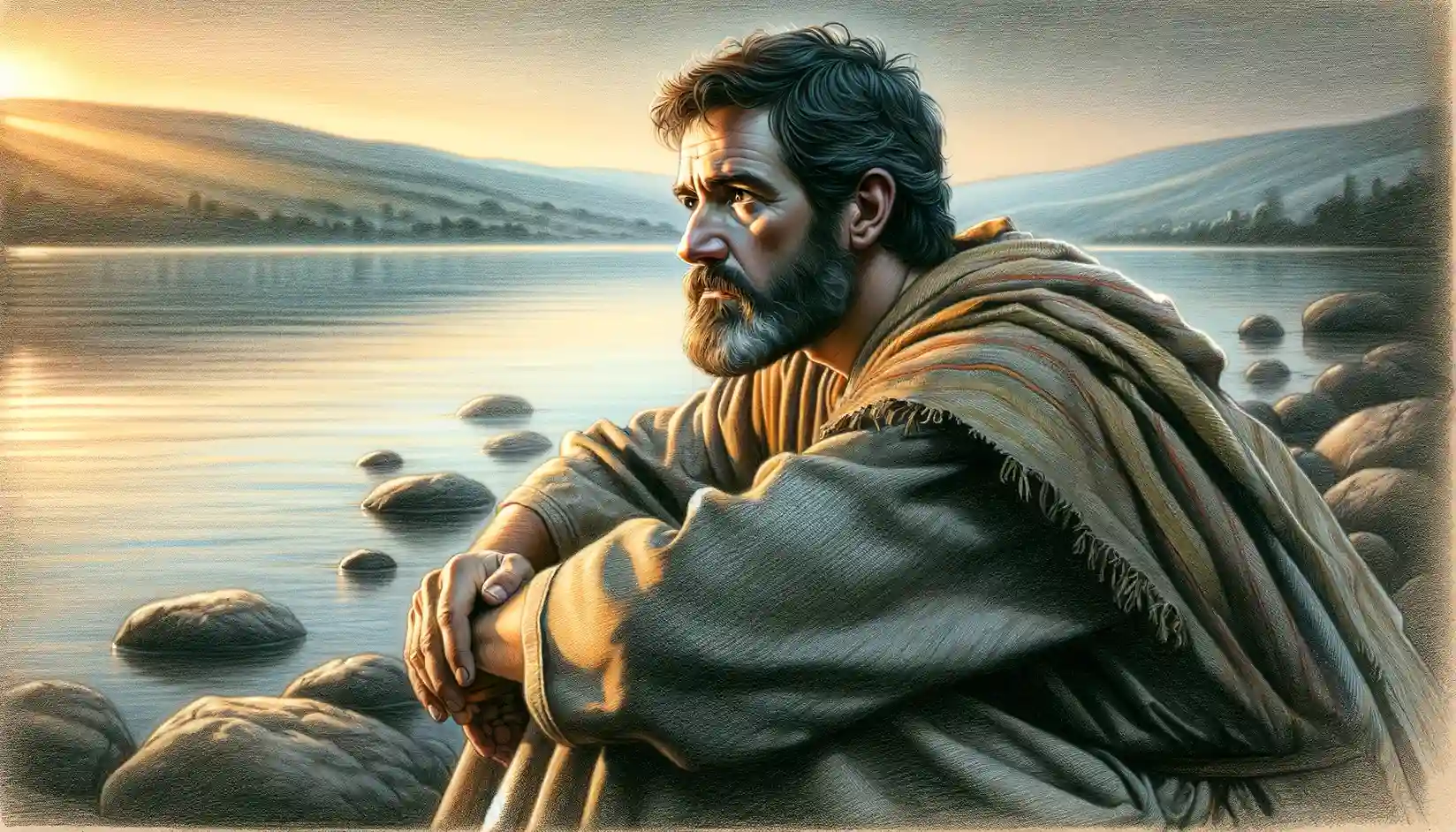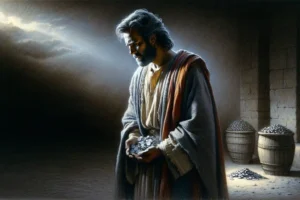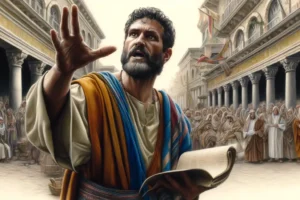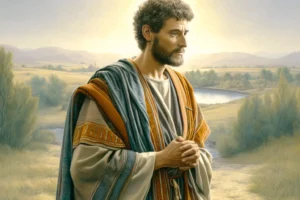
Simon Peter: Former Fisherman, Leader of the Apostles
Simon Peter, one of the most prominent figures in the New Testament and early Christianity, has a remarkable journey from a simple fisherman to a foundational leader of the early church. Here are some quick facts about him:
- Occupation Before Apostleship: Peter was originally a fisherman by trade, working on the Sea of Galilee.
- Calling: He was called to be a disciple by Jesus while fishing, with the famous charge, “Follow me, and I will make you fishers of men.”
- Leadership Role: Peter often acted as the spokesperson for the apostles and is considered one of the first leaders of the early church.
- Character Traits: Known for his boldness and impetuosity, Peter’s personality is vividly depicted in several key New Testament episodes, including his walking on water and his threefold denial of Jesus.
- Key Moments: He famously confessed Jesus as the Christ, was present at the Transfiguration, denied Jesus three times during the crucifixion, and reaffirmed his love for Jesus post-resurrection, which restored his position among the apostles.
- Epistles: Peter is traditionally credited with writing two epistles, First and Second Peter, which address suffering and perseverance among early Christians.
- Martyrdom: According to Christian tradition, Peter was martyred in Rome under Emperor Nero, crucified upside down at his own request, as he felt unworthy to die in the same manner as Jesus.
- Legacy in the Catholic Church: Peter is venerated as the first Pope by the Roman Catholic Church, establishing an apostolic succession that continues to the present day.
- Symbols: Commonly represented with keys, symbolizing the keys to the kingdom of Heaven, as mentioned in Matthew 16:19.
Simon Peter, one of the most central figures in the New Testament and Christian history, exhibits a compelling narrative arc from an ordinary fisherman to a pillar of the early Church. His life, as documented across the Gospels and Acts, as well as in Christian tradition, offers profound insights into themes of faith, leadership, and redemption.
Early Life and Calling
Originally named Simon, Peter was a fisherman on the Sea of Galilee. His life took a transformative turn when he and his brother Andrew were called by Jesus to follow Him, promising that He would make them “fishers of men” (Matthew 4:19). This marked the beginning of Peter’s journey from a secular vocation to spiritual leadership.
Characteristics and Apostolic Role
Peter is often portrayed as impulsive and bold, characteristics that defined both his strengths and his vulnerabilities. He is the disciple who dared to step out of the boat to walk on water towards Jesus, yet he also began to sink when his faith wavered (Matthew 14:29-30). His confession of Jesus as the Christ (Matthew 16:16) led Jesus to declare Peter the “rock” upon which His church would be built, a testament to his foundational role in the church’s future.
Pivotal Moments
Several key events in the Gospels highlight Peter’s complex relationship with his faith and his Master:
- Transfiguration: Peter witnessed Jesus’ transfiguration alongside James and John, further cementing his role as a primary witness to Jesus’ divinity (Matthew 17:1-9).
- Denial of Jesus: Perhaps the most poignant moment of his discipleship was Peter’s threefold denial of Jesus during the crucifixion events, a profound low point that tested his faith and self-identity (Luke 22:54-62).
- Restoration and Commission: Post-resurrection, Jesus restored Peter by asking him three times if he loved Him, paralleling Peter’s three denials, and then commanded him to “feed my sheep” (John 21:15-17). This reinstatement highlighted the theme of forgiveness and redemption.
Leadership in the Early Church
After Jesus’ ascension, Peter took on a leadership role among the apostles, evident in his prominent actions in the early chapters of Acts. He preached the first sermon on the day of Pentecost, led the community of believers in Jerusalem, and played a key role in the early missionary activities of the Church, including the significant decision to preach to Gentiles (Acts 10).
Authorship and Martyrdom
Traditionally, Peter is credited with the authorship of First and Second Peter, epistles that address the persecution of Christians and encourage steadfast faith. His martyrdom, as recounted by early Church fathers, occurred in Rome under Emperor Nero; Peter was crucified upside down, a choice reflecting his humility and unworthiness to die in the same manner as Jesus.
Legacy and Symbolism
Peter’s legacy is foundational for Christianity, especially within the Roman Catholic Church, where he is considered the first Pope, his authority believed to be handed down through successive popes. Symbolically, Peter is often depicted with keys, representing the “keys of the kingdom of heaven” given to him by Jesus (Matthew 16:19).
Conclusion
Peter’s life story is a powerful narrative of transformation, illustrating a journey from doubt and denial to restoration and committed leadership. His experiences resonate with themes of fallibility and redemption, underscoring the human capacity for spiritual growth and resilience. His legacy, as both a flawed individual and a revered apostle, continues to inspire and instruct believers on the dynamics of faith, leadership, and divine grace.
Tag:apostle, apostolic succession, biblical figures, Christian leadership, crucifixion, early Church, faith and redemption, First Pope, fisherman, Keys of the Kingdom, martyrdom, New Testament, Pentecost, Peter's denial, preaching, restoration, Roman Catholic Church, Simon Peter, spiritual transformation
Leave A Reply
You must be logged in to post a comment.




2 Comments